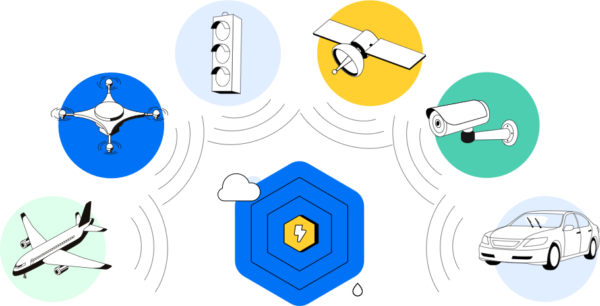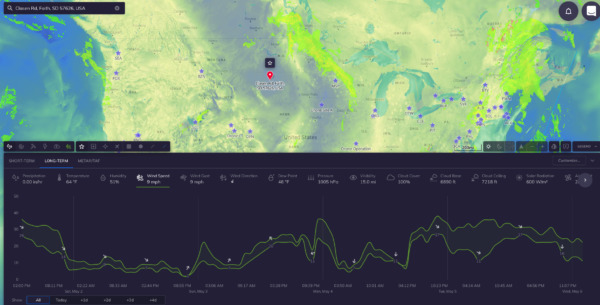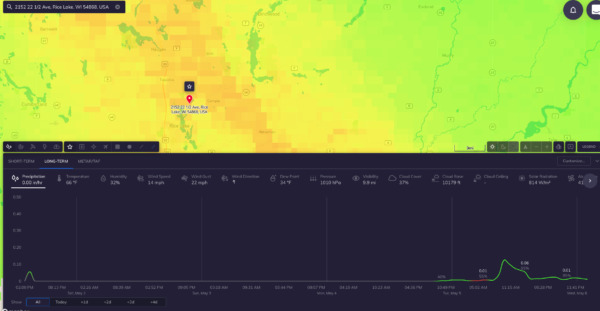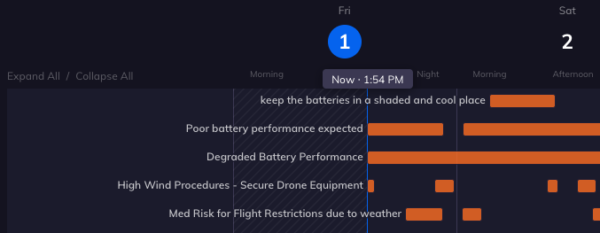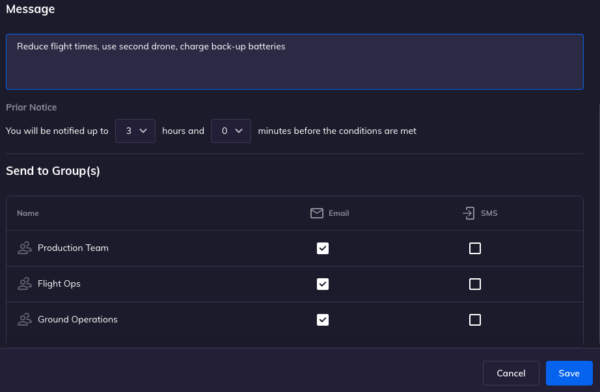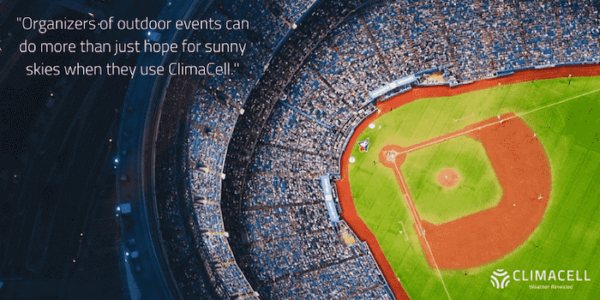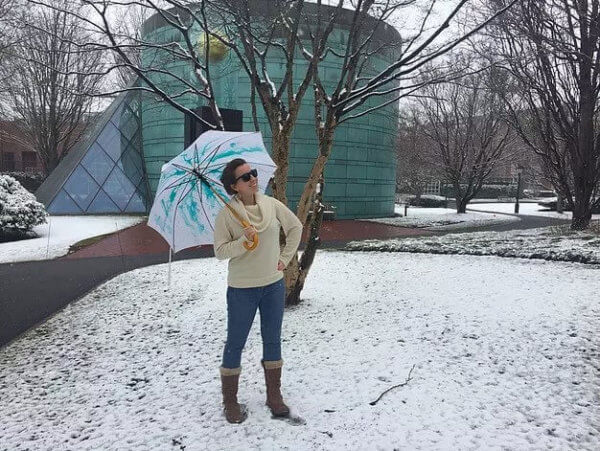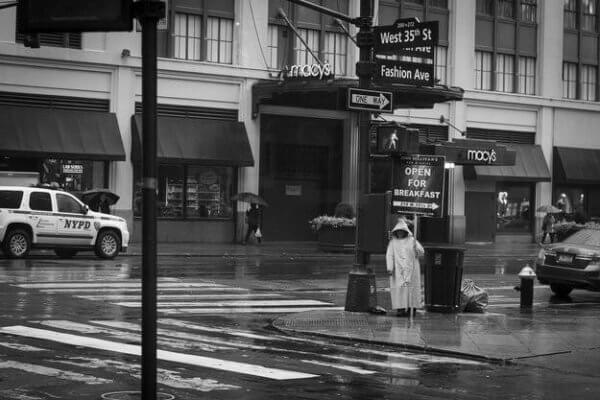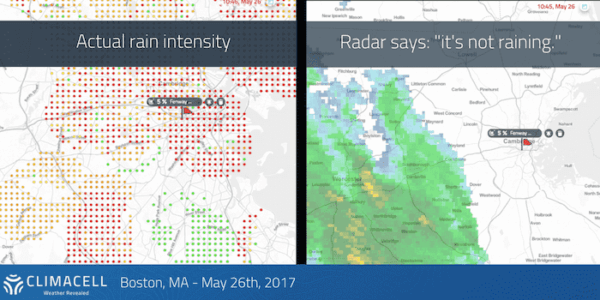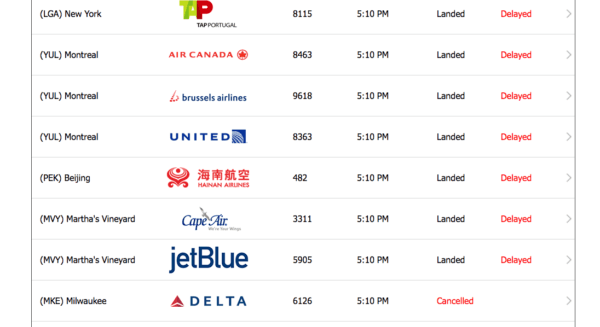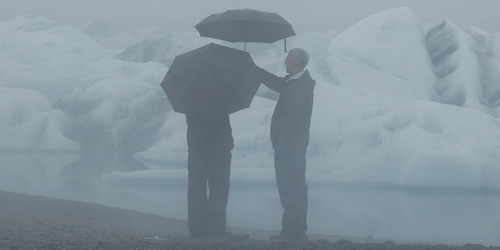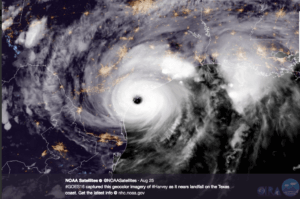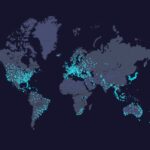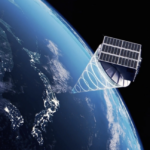The drone industry is poised to have one of the most significant impacts worldwide over the next few years. Consider the drone services market for example is expected to grow from roughly $4 billion to $63 billion by 2025, that’s a 1,475% increase! A recent article in Business Insider highlighted a few areas across the enterprise market where drone growth is rapidly increasing with a seemingly endless number of critical, operationally focused use cases:
Drone Usage By Industry

- Agriculture: Global agricultural consumption is expected to rise 69% between 2010 and 2050, and for farms with thousands of acres of land to manage or more, the use of drones is a business changing opportunity. By using drones, farmers can survey and map, inspect crop conditions, manage valuable livestock, expensive irrigation systems, and fertilization. In addition, drones can be used for fertilizing crops at a speed 40x to 60x faster than doing so manually.
- Automotive: Car manufacturers are using drones to reinvent their delivery operations and bypass traffic to save time and reduce carbon emissions. In using drones, manufacturers can connect their manufacturing plants to near-by facilities and deliver parts directly to their production line. The time savings have already been documented in some cases of reducing delivery times from 90 minutes to 15 minutes, an 83% reduction.
- Autonomous Vehicles, and Urban Air Mobility: In some cases such as urban air mobility, entirely new markets are being created by drones. A simple Google search of “urban air mobility” will give you a glimpse of how the future of the world is being worked on right now, but think “flying taxis” which are essentially large, complex and technologically advanced drones.
- Construction: According to a report by PwC, the drone market for construction could quickly grow to roughly $30 billion. Core use cases stem from existing laws and regulations pertaining to worker safety. For instance, in the United States construction companies are required by law to perform site surveys regularly to make sure working conditions are safe for crews. For larger sites, this type of process can take tens of hours, however, using a drone can reduce that time down to 20 minutes. Pause for a moment to consider the time and cost savings there, 10 hours down to 20 minutes. With daily construction crew costs in the thousands to tens of thousands and project completion delays a constant industry financial headache, using drones presents a significant opportunity to improve operations and reduce worker safety risk.
- Delivery and On-Demand: It’s all about speed and accessibility. In a recent trial, delivery drones showed the ability to cover distances 80x faster than traditional delivery methods. While this is a broad category, the types of drone deliveries include:
- Healthcare: Drones can more easily transport medicines, vaccines, and retrieve medical samples (more detail below under the healthcare tech section).
- Food Delivery: If you can eat it, odds are it can be delivered by a drone. That’s what the food industry is working on to automate deliveries from tacos to salads for individuals, groups or catered events.
- Consumer Goods Delivery: Anything you can buy online is already starting to see the transition from truck based delivery to new drone programs rolling out in select locations across the world.
- Postal Delivery: The use of unmanned drones for postal delivery has already seen trials in Australia, Switzerland, Germany, Singapore, and the United States Postal Service has also begun their own delivery system testing.
- Energy and Utility: Energy companies are using drones for a number of reasons spanning across the industry:
- Renewables energy companies: Renewable companies are primarily using drones for inspections of assets that are hundreds of feet in the air. By doing so, the companies are able to reduce inspection time, save on labor costs, and avoid putting workers in hazardous situations such as dangerous heights, high voltage contact or working in inclement weather. Renewables companies in some cases have found drones to be 97% more effective than manual solar farm inspections since workers don’t need to spend the time walking across acres of solar panels or climbing onto roofs.
- Oil and Gas: Drones have quickly become a critical component to the oil and gas industry for remote monitoring and surveillance to help decrease costs, reduce safety risks and maximize production. This includes gas emissions monitoring, flare stack inspections, oil pipeline inspections, offshore oil and gas platform inspections, tailings pond inspections, methane management, materials handling, and emergency response and damage detection. The costs savings by using drones is notable as helicopters cost roughly $3,000 per hour for jobs such as pipeline aerial inspections, and avoiding flare stack production can save more than $4 million. Remote monitoring also helps oil and gas companies manage infrastructure, tankers, trucks, equipments, and production platforms.
- Refineries: Drones are being used in refinery and petrochemical operations to reduce risk and increase efficiency around inspections. By equipping drones with cameras, companies can perform extensive inspections, use preventative maintenance to avoid major costs and safety risks throughout a given facility. With thousands of acres for inspections to cover, savings are already in the millions by using drones.
- Healthcare Tech: The use of drones in healthcare is exceptionally exciting in remote areas of the world and at-risk populations with initiatives across blood sample collection and blood transfusion delivery, food/aid delivery, human transport to hospitals and medical centers, cardiac defibrillator drones, pre-ambulance arrival medical aid delivery, disaster relief (clean water, food, aid) in areas struck by natural disasters, medicine delivery, pick up and delivery of samples for lab testing, and more.
- Insurance: With the growing impact of climate on future values and property risk, insurance companies are ramping up their property assessment procedures like never before. The advantage of using drones for assessments is they can get into places that are hard or dangerous for people to access, especially if there has been a recent natural disaster in the area. Additionally drones can record the exact images and/or videos needed and quickly relay them back to stakeholders instantly both for things like property assessments in addition to other incidents like automobile accidents or areas struck by disasters.
- Law Enforcement and Local Government: In addition to general population safety usage, drones are being used to advance the next iteration in smart cities for surveillance, crowd control monitoring, monitoring air quality, and in select cities currently being used for social distancing programs and geo-mapping COVID-19 hotspots.
- Military: A report by Goldman Sachs reported global military spend will surpass $70 billion as drones offer an unmanned aerial vehicle opportunity with multiple capabilities. Such capabilities include combat, research, surveillance and reconnoissance, situational awareness, battle assessment damage, target decoys and weapon or aid delivery.
- Mining: Drone usage in mining is incredibly impactful, helping with stockpile management, gathering better inventor and monthly financial data, operational planning for haul roads, water and sediment flow, drilling and blasting assessments, hazard mitigation management, tailing dams, general mining exploration and more. With monthly mining operations in the millions, drones offer tremendous cost savings and operational efficiencies.
- Sanitation and Cleaning: With outdoor areas like parks or public transportation hubs needing to be cleaned, drones can carry roughly 2.6 gallons (10 litres) of cleaning solution / disinfectant and cover 4-5x more area than a human over the course of a day. The use of drones also keeps people away of hazardous working conditions.
- Real Estate and Smart Homes: The use of drones for homes and apartment buildings starts with real estate. Companies can easily create aerial footage and videos for a fraction of the price and time to enhance the buying experience. For smart homes and buildings, drones offer the next generation of home security, building surveillance, monitoring, and management.
- Transportation and Logistics: Challenged with the task of global delivery, the transportation and logistics industry is going through a transformational increase in demand which requires the help of drones in a variety of ways.
- Railroads: The main use cases for railway drones is track inspection, and using drones provides valuable cost savings, high resolution data, and decreases safety risk for workers. In addition, drones can be used to inspect upcoming areas or assess damage.
- Maritime and port operations: Drones can help vessel and port managers improve efficiency and reduce safety risks by assisting with ship navigation, aerial cargo transportation, vessel inspections, security and surveillance, afloat delivery, inventory management, and more
- Air Freight: In addition to aiding existing manned operations, cargo drones offer the air freight industry new opportunities to reduce costs and be more nimble in their transport capabilities
- Trucking: The trucking industry uses drones to manage storage infrastructure and inventory, on-site surveillance and security, workplace monitoring like loading docks to ensure safety procedures are being followed, and last mile facility-to-destination delivery and logistics.
How Weather Impacts Drones

- Avoiding drone damage: Certain weather elements like precipitation can get inside a drone and ruin the electrical components making the drone inoperable and crashing it to the ground
- Managing drone range: Colder temperatures can reduce battery life drastically impact drone range and flying times
- Planning drone courses and flight paths: Weather impacts pre-flight path planning, while unexpected weather calls for quick in-flight rerouting decision making
- Keeping control of your drone: High winds can make drones impossible to control during takeoff, in-flight or landing, and/or send them crashing into anything that gets in their way
- Functioning drone communication: If communication components get damaged by precipitation, data transmissions can get completely cut off
- Drone safety best practices: Drones being flown in public areas are at risk of crashing to the ground and injuring people or property
- Unsuccessful drone data collection: Flying in low visibility from fog can reduce a drone cameras ability to gather visual data, wasting time and money on unsuccessful flights
Let’s now look at the weather elements most responsible for impacting drone operations.
How Specific Weather Elements Impact Drones

- Fog and cloud cover: For any drone in need of collecting photographic or video footage, unexpected fog is your worst enemy (in addition to moisture issues) as it reduces visibility and should be avoided at all costs to ensure successful flights. Additional weather types to be careful of include haze and glare.
- Precipitation: Water from rain, snow, fog or humidity can cause short circuits in the drone electrical components which can impact pilot ability to control the drone and lead to physical damage to the drone. In some cases, simply landing a drone that isn’t waterproof on wet grass can be enough to cause issues.
- Cold rain, snow or ice in freezing temperatures: As your drone ascends hundreds of feet into the air, it’s components become susceptible to risk of freezing. Specifically, if your propellers ice up or freeze altogether the drone will start to aggressively shake and have a weight imbalance rendering your camera inoperable and potentially sending your drone crashing to the ground.
- Cold Temperatures: Most quadcopter drones are designed to fly down to 32 degrees Fahrenheight, but always be sure to check. In any case, as drones fly into the sky they become at risk of much colder temperatures quickly and the one thing drone batteries don’t respond well too is being cold. Battery life and drone range could be impacted by 50% or more with the wrong cold weather conditions.
- Warm Temperatures: On the other end of the thermometer, most quadcopter drones are designed to fly up to to 104 degrees Fahrenheight. With warmer weather comes drone operation best practices including managing battery temperature, shorter flight times, monitoring drone electronics and camera to avoid overheating, or letting moisture accumulate.
- Snowfall: With snow, in addition to the previously mentioned moisture risks come lower visibility for imaging and shorter flight days as it gets dark earlier in the winter months.
- Lightning: Needless to say flying drones during lightning storms isn’t a good idea, but there are extenuating circumstances and more commonly unexpected weather interrupts drone flights all the time. If your drone is hit by lightning, the strike is likely to fry the motor and electronics, and sending the drone crashing to the ground.
- Hail: The right size hail and wind conditions can knock a drone clean out of the sky. At best, hail will damage the exterior of your drone and impact your ability to control and keep your drone on its desired flight path.
- Tornadoes and Hurricanes: Similar to to hail, tornadoes and hurricanes put your drone at risk. Having a good understanding of storm paths and intensity is crucial if you’re going to be flying drones anywhere near tornadoes or hurricanes
- Wind: The BIGGEST culprit of them all, wind. Low altitude wind speed, gusts, and direction impact drone takeoffs, in-flight controllability, and landing. Furthering the issue are various categories of wind such as constant wind, turbulent flow, propeller vortex, wind shear and wind velocity, all of which can have a unique impact on drone operations. The result of unwanted wind can include damaged drones, crashed drones (especially worrisome in public areas) and uncontrollable drones.
Using Predictive Weather Intelligence For Drone Operations
Now that we’ve reviewed all the industries relying on drones, the ways in which drones are being used, the ways weather can impact drone operations, and the types of weather that need to be managed, where do we go from here? Weather is the determining factor that will allow your drone operations to be successful or not and since it’s a 24/7 job with endless complexities, not one that can be managed easily. You need a weather intelligence engine to help you automate your drone operations process from pre-flight planning, to in-flight decision making, and post flight protocols, and that’s where Tomorrow.io is ready to help. Our platform automates all of the weather based decisions regarding your drone operations, and the reason we’ve been able to partner with some of the industry leaders like The United States Air Force and Boeing is because of our unique approach to weather.
Weather data:
Tomorrow.io has taken a revolutionary approach to collecting weather data. While we incorporate government data into our models, instead of stopping there and just repackaging that data we then incorporate hundreds of millions of additional global data points like sensors from airplanes (and drones!), city cameras that detect rain, windshield wipers on automobiles, and a number of other similar examples. The more important part is that the results of our “weather of things” approach gives you the only minute by minute hyperlocal weather data down to the street level in addition to ground to cloud for all your drone flight paths.
For instance, below you can see wind speeds at the macro-level for the next 4 days in the town of Faith, South Dakota. Wind speeds will be varying by more than 30 MPH over the next 4 days which you can easily see here, in addition to wind gusts and direction.
Another example below shows precipitation at the micro-level, this time in Rice Lake, Wisconsin with precipitation happening throughout the day on Tuesday.
Visualizing Weather Impact
While it’s great to be able to visualize weather and see the forecast using Tomorrow.io’s revolutionary approach to weather data and models, that’s just the beginning. The truth is knowing the forecast doesn’t matter, it’s not helpful. Knowing the impact of the forecast and how it will impact your operations is where the real opportunities present themselves. With Tomorrow.io, our software telsl you how weather will impact your business in the coming days and in real-time so you can make decisions. Below is an example of our Insights Dashboard, which visualizes everything you need to know about for a given week or day. As you can see, the dashboard shows you what days and times flying drones will be a risk due to high winds, precipitation or any other weather parameters you want to monitor.
Tomorrow.io’s software is able to also give you automated recommendations in real-time down to the exact coordinates you are or are going to be operating in. We’ll also automatically track and manage everything from when battery life will be impacted to implementing high wind procedures. As you can see, these recommendations go well beyond just getting the weather forecast. We show you what do, when, and why so you can plan ahead accordingly. Tomorrow.io’s platform offers both API and enterprise software with 24/7 service offerings from our team certified meteorology experts in addition to the automated software if needed.
Streamlining Team Messaging and Communication
The final piece of the puzzle is making sure everyone on your team and key stakeholders are all in the know. By using Tomorrow.io, not only can you centralize all your weather data into one system so everyone is looking at the same data, but you can also automate team communication using alerts. With Tomorrow.io, you can send messages via text, email, slack, or whatever other communications tool your company uses.
As seen above, you can set-up messages that get sent out to team members and stakeholders to ensure protocols are being followed. The above is an example citing cold temperatures and the impact, which will be reduced battery life and calling for the use of a second drone and back-up batteries. The alert is set-up to be sent 3 hours before the cold weather arrives and will be sent out via email to select teams. All of Tomorrow.io’s messaging is customizable to fit the needs of your team and drone operations.
Get Access to The World’s Weather Intelligence Platform
We hope you’ve found this post helpful for all things drone and weather operations. If you’d like to learn more about how you can use predictive weather intelligence to improve your drone operations efficiency, reduce costs, maximize revenue, and avoid unnecessary safety risk and damages risks then we’d love to chat! The bottom line savings to your company using Tomorrow.io is in the millions if not tens of millions per year, and we’d love to show you how we can do it for you. Our drone weather experts are ready to learn about your current operations and show you how you can implement a quick and scalable solution that will have you well ahead of the curve. The number of drones in the air is expanding exponentially, putting your strategy at constant risk.
See How to Stand Out from Other Operators with Weather Intelligence

